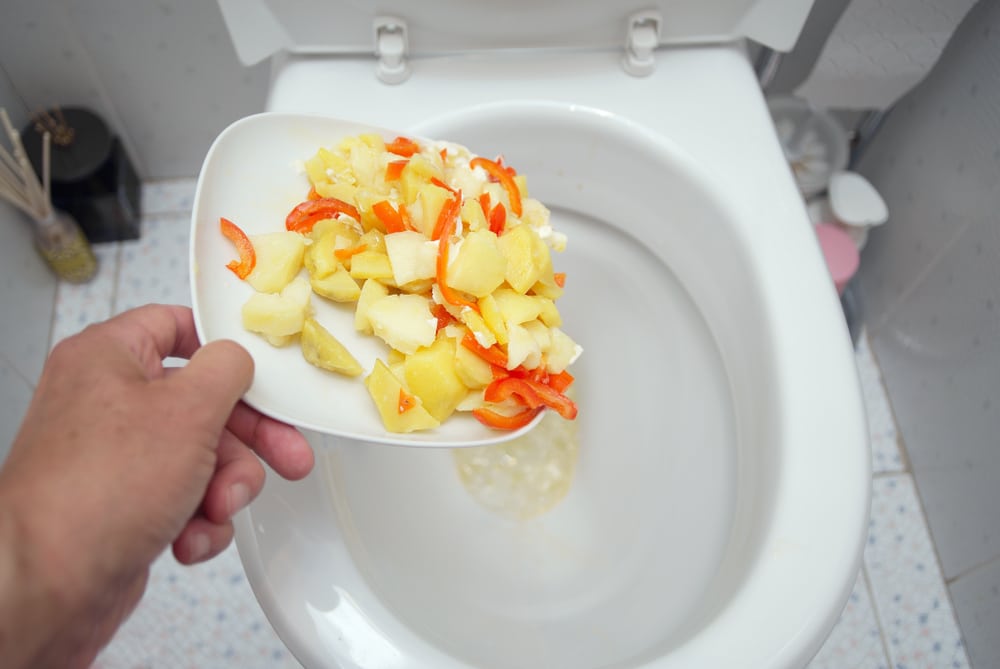Is it Recommended to Dispose of Food Down the Toilet?
Is it Recommended to Dispose of Food Down the Toilet?
Blog Article
Every person has got their own idea on the subject of What Can Happen If You Flush Food Down the Toilet?.

Introduction
Lots of people are frequently confronted with the dilemma of what to do with food waste, specifically when it pertains to leftovers or scraps. One common inquiry that develops is whether it's okay to flush food down the toilet. In this article, we'll look into the reasons that people could take into consideration flushing food, the effects of doing so, and alternate approaches for appropriate disposal.
Reasons that people may consider flushing food
Absence of understanding
Some people might not know the prospective injury brought on by purging food down the commode. They might erroneously think that it's a safe technique.
Convenience
Purging food down the commode may appear like a quick and easy solution to throwing away undesirable scraps, particularly when there's no nearby garbage can readily available.
Negligence
In many cases, individuals might just choose to flush food out of large laziness, without taking into consideration the consequences of their activities.
Repercussions of flushing food down the toilet
Ecological influence
Food waste that winds up in waterways can contribute to air pollution and damage water communities. In addition, the water used to purge food can stress water resources.
Plumbing problems
Flushing food can cause clogged pipes and drains pipes, triggering expensive plumbing repair services and aggravations.
Kinds of food that must not be flushed
Fibrous foods
Foods with coarse textures such as celery or corn husks can obtain entangled in pipes and cause obstructions.
Starchy foods
Starchy foods like pasta and rice can take in water and swell, causing blockages in pipelines.
Oils and fats
Greasy foods like bacon or food preparation oils need to never be flushed down the commode as they can solidify and cause obstructions.
Correct disposal techniques for food waste
Making use of a garbage disposal
For homes outfitted with garbage disposals, food scraps can be ground up and flushed with the plumbing system. Nevertheless, not all foods appropriate for disposal in this way.
Recycling
Specific food product packaging materials can be recycled, decreasing waste and lessening ecological effect.
Composting
Composting is a green way to throw away food waste. Organic materials can be composted and made use of to improve soil for horticulture.
The value of proper waste management
Lowering environmental injury
Appropriate waste monitoring practices, such as composting and recycling, help decrease contamination and protect natural deposits for future generations.
Securing plumbing systems
By avoiding the method of flushing food down the commode, property owners can avoid costly plumbing repairs and maintain the honesty of their pipes systems.
Final thought
To conclude, while it may be alluring to flush food down the commode for convenience, it is essential to understand the possible consequences of this activity. By taking on proper waste administration methods and disposing of food waste properly, people can add to healthier pipes systems and a cleaner setting for all.
FLUSH FOOD DOWN THE TOILET?
FLUSHING FOOD CAN CAUSE BLOCKED DRAINS IN YOUR HOME
All of the plumbing fixtures in your home are connected to the same sewer pipe outside of your home. This outdoor sewer pipe is responsible for transporting all the wastewater from your home to the Council sewer mains. Even small pieces of food that go down the kitchen sink can cause problems for your sewer. It should therefore be obvious that flushing larger bits of food, such as meat, risks a clog in either the toilet itself or the sewer pipes. Flushing greasy food is even more problematic because oil coagulates when it cools, coating the interior lining of your pipes.
THE TOILET IS NOT A BIN
Food isn’t the only thing that people shouldn’t be flushing down the toilet. People use the toilet to dispose of all kinds of things such as tampons, makeup wipes, dental floss, kitty litter and even underwear. Water goes to great lengths to educate residents about the high costs and stress placed on wastewater treatment systems simply from people flushing the wrong stuff down the toilet. It costs taxpayers millions of dollars each year, and homeowners thousands in blocked drain repairs.
FLUSHING FOOD IS A WASTE OF WATER
Flushing food is a waste of our most precious resource - water. In June this year Level 1 water restrictions were introduced to protect water supply from drought conditions. Much of New South Wales continues to be affected by prolonged drought with recent figures revealing up to 97 per cent of the state remains in drought. Depending on whether you have a single or dual flush toilet, every single flush uses between five and 11 litres of water. In the current climate this is a huge amount of water to be wasting on flushing food that should be placed in the bin (or better yet, the compost).
https://www.jabplumbingsolutions.com.au/blog/can-you-flush-food-down-the-toilet

We hope you liked our article on . Thank you so much for finding the time to read through our blog post. Please set aside a second to share this post if you liked it. Many thanks for your time invested reading it.
Visit Report this page